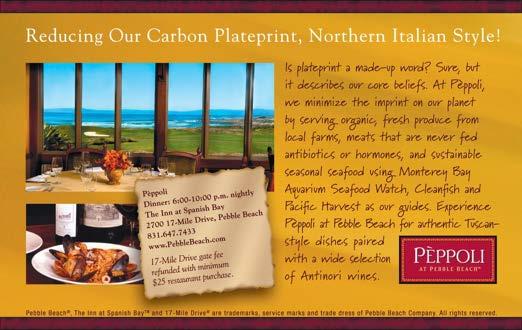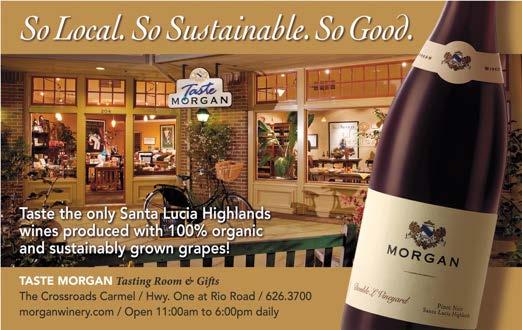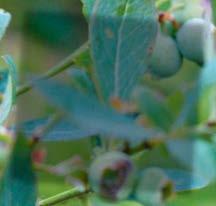
12 minute read
On the Farm
On the farm Mixed blessing
Living in the land of the “super fruit”
Advertisement
By Deborah Luhrman
All sorts of delicious edibles are grown in the Monterey Bay area, but our No. 1 crop in terms of sales and nutritional value is berries. Rows of strawberries, red raspberries, blackberries, olallieberries—and now blueberries—line the highways and back roads of the Central Coast, straddling Santa Cruz and Monterey Counties. Here coastal fog keeps the climate just right—not too hot and not too cold—allowing the summer sun to slowly ripen the fruit for maximum taste and healthfulness.
Berries pump hundreds of millions of dollars into the local economy and provide local residents with a plentiful and potent source of vitamin C and other antioxidants. Scientists and dieticians agree that disease-fighting polyphenols and flavonoids in berries have a very positive effect on human health. Researchers have found links between eating berries and reduced inflammation, reduced heart disease, lower blood pressure, weight loss, cancer suppression and, recently, a decreased risk of Parkinson’s disease. Growers promote berries as “super fruit,” “nature’s medicine cabinet” and “one of life’s few un-guilty pleasures.”
But all is not perfect in our berry paradise. The Environmental Working Group has identified strawberries as No. 3 on its Dirty Dozen list of most contaminated foods. Researchers found residues of 13 different pesticides on strawberry samples they tested. Raspberry samples contained residues of 51 pesticides, and blueberries also fared poorly in the analysis, coming in at No. 10 on the Dirty Dozen list.
“I wouldn’t eat a non-organic berry, not just because of food safety, but for the greater good of the environment,” says Steve Pedersen, who with his wife Jeanne owns the 40-acre High Ground Organics farm in Watsonville.
“A lot of these fields drain directly into the [Harkins] Slough, and putting a large amount of highly soluble chemical fertilizers on them would leach into the water, causing an algae bloom and causing fish to die off,” he explains.
Almost half of California’s strawberries and about 44% of the entire nation’s crop are grown in Monterey and Santa Cruz Counties. The most recent statistics show that in 2010, Monterey County grew 10,664 acres of strawberries worth $740 million, and Santa Cruz produced 3,317 acres of strawberries worth $197 million. Only about 5% of that acreage is grown organically.
So it is no surprise that our area was on the frontlines of the battle against the use of methyl iodide—a pesticide known to cause cancer and late-term miscarriages in farm workers and other residents of rural communities. It was touted as the next best strawberry fumigant, but both the Santa Cruz and Monterey County Boards of Supervisors, along with State Assembly Members Luis Alejo and Bill Monning, came out against the pesticide. Feeling the pressure, Tokyo-based manufacturer Arysta LifeScience Corp. withdrew its product from the U.S. market in March, before a single field was gassed.
Organic Roots
Berry production is highly labor-intensive work, and the welfare of farm workers in the strawberry fields has always been paramount to Jim Cochran, owner of Swanton Berry Farm in Davenport. In the 1970s he helped found the Cooperativa Campesina, a first attempt at assisting agricultural workers in Watsonville to start their own farms.
“I could talk to farm workers and I could talk to bankers, so I played a kind of broker role,” he recalls. Later with his own business, Cochran became the first organic farmer to sign a contract with the United Farmworkers Union. Today, workers participate in an employee stock ownership plan, making many of the farming and hiring decisions themselves.
Swanton Berry Farm was the first strawberry farm to be certified organic in California. Back in 1983, Cochran says he and a buddy each put up $10,000 to see if strawberries could be grown without pesticides, particularly methyl bromide, a widely used fumigant that depletes the ozone layer.
“Methyl bromide is kind of a magical thing,” he explains. “It kills everything to about 12 inches deep and then all the dead stuff turns into fertilizer that makes the strawberries grow enormous.”
Cochran and his friend rented a four-acre field and sprayed half the strawberries, leaving the other half unsprayed. Contrary to expectations, both fields thrived.
“Production was slightly lower on the unsprayed field, but they tasted better,” he says. “We got big, beautiful, premium strawberries that smelled great and tasted great.”
Cochran has been perfecting organic growing methods for strawberries and other berries ever since, at the same time expanding his business to 20 acres in five separate plots strung out along Highway 1 north of Santa Cruz.
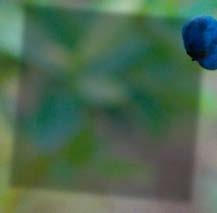
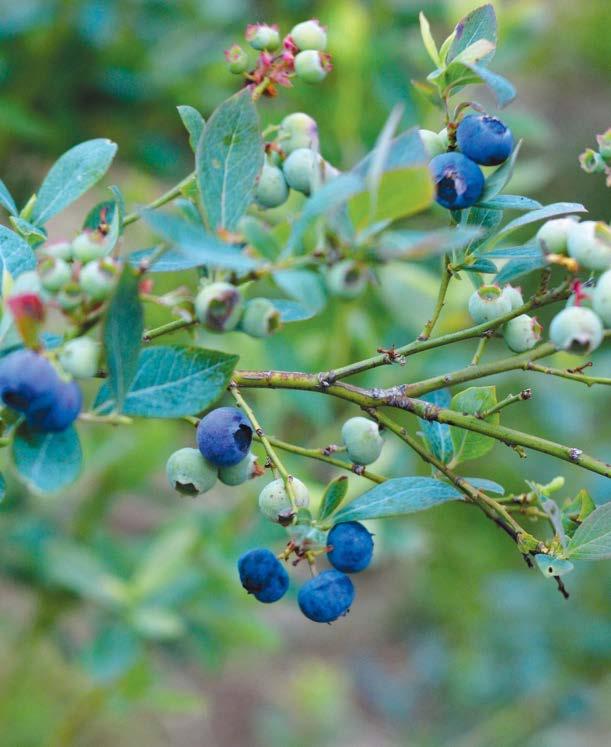
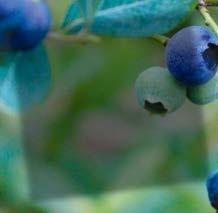
Berry men: Top to bottom, Gizdich Ranch’s Vince Gizdich and Swanton Berry Farm’s Jim Cochrane.
“Basically we farm the old-fashioned way. We rotate crops, build up the soil and pick varieties that are resistant to disease,” Cochran says. Organic soil amendments are more expensive than chemical fertilizers, but the biggest cost of organic strawberry growing is crop rotation. Swanton Berry Farm uses the same field for strawberries just once every six years to avoid common strawberry pests.
Other organic farmers feel they can get away with planting the same plot with strawberries every four years. In between times, they turn the fields over to growing vegetables or cover crops. It’s been found that broccoli and cauliflower work best to clean the fields of strawberry diseases, while cover crops of mustard or fava beans help fortify the soil.
Swanton Berry Farm is probably best known for its U-Pick fields of strawberries, olallieberries and blackberries. (See box below.) From May through July, people flock from all over the state to stock up on organic berries at much lower prices than the farmers’ market or the supermarket. It is a pleasant day’s outing by the beach and provides a new appreciation for the back-breaking work performed by local farm workers.
The Last of the Olallies
The other big U-Pick farm is Gizdich Ranch in Watsonville, which specializes in olallieberries, as well as strawberries, blackberries and boysenberries.
“It’s a local ritual for jam makers to come out to the farm every summer,” says Vince Gizdich, who runs the ranch his family started back in the 1930s. “They start thinking about Christmas in June or July and come pick fruit for jams they give as gifts.”
Gizdich Ranch, which has not sought organic certification but uses integrated pest management techniques, including application of beneficial insects, snail baits and organic worm sprays in order to avoid pesticide use, began as a row crop and apple farm. When the olallieberry was developed by U.S. agriculture officials in the 1950s, they decided the Pajaro Valley was the ideal place for them to grow. Gizdich put in a plot down the road from the apple orchards, as did many other local growers.
Olallies are a cross between blackberries and red raspberries. The name means “berry” in the Chinook Indian language of the Pacific Northwest. They have a sweet, yet tangy taste that is highly prized by bakers for pies and cobblers. They are large, easy to pick and very tender, but that makes them hard to ship and extremely perishable. So nowadays, most of Watsonville’s olallieberry rows have been uprooted in favor of easier-to-ship, more productive and more profitable red raspberries or blackberries.
While statistics are not available specifically for olallieberries, county crop reports for 2010 note that Santa Cruz County farmers grew 2,033 acres of raspberries worth $91 million and 763 acres of blackberries worth $34 million, while Monterey County growers in 2010 produced 688 acres of raspberries worth $42 million.
Vince Gizdich still grows olallieberries because of the U-Pick tradition at the farm. It started in 1964 when his father, also named Vince, read an article about how East Coast farmers were supplementing their income with farm visits for city dwellers and valueadded products like farmhouse cheese. His dad was inspired to use some of the ranch’s cider production to make apple cider doughnuts and to open up for visitors.
“It was a big flop,” he says, laughing. “Nobody wanted apple cider doughnuts.” So the doughnut machine was pushed into a corner of the barn and replaced with a big oven, and his parents started baking apple and olallieberry pies. Today, the farm produces a dozen varieties of fruit pies, as well as olallieberry jam and syrup. In season, Gizdich olallieberries can be found in select local stores, like Grove Market in Pacific Grove, Nielsen Bros. Market in Carmel and Shopper’s Corner in Santa Cruz. Out of season, the berries are usually available frozen, allowing the farm to bake and sell its pies year-round throughout our area, from as far north as Ben Lomond Market, east to Star Market in Salinas, and south to Carmel Valley Market in Carmel Valley.
In addition to profitability challenges, a leaf rust disease that has developed in recent years is also causing farmers to pull up their ollalieberries. Swanton Berry Farm still has olallies at its Coastways farm near Año Nuevo, but they are being attacked by disease and are only expected to last another five or six years.
In a sad sign of the times, Bargetto Winery in Soquel stopped producing its popular Olallieberry Wine last summer, because it simply could not get enough fruit. But stepping right up to the plate was Santa Cruz Mountain Brewing, which produced its first Olallieberry Cream Ale last summer, much to the delight of customers. The pink-
Explore
Gizdich Ranch • U-Pick strawberries, olallieberries, boysenberries 55 Peckham Rd., Watsonville May–July 831.722.1056 • www.gizdich-ranch.com
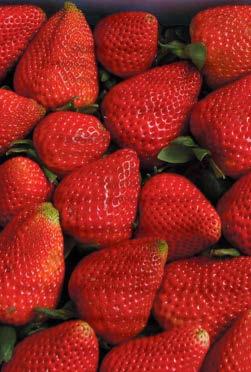

Swanton Berry Farm • U-Pick strawberries, olallieberries, blackberries Highway 1, Davenport and Pescadero May–August 831.469.8804 • www.swantonberryfarm.com

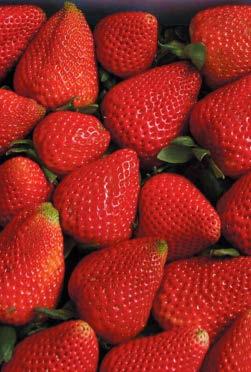
Serendipity Farms • U-Pick Raspberries 9130 Carmel Valley Rd., Carmel September 831.726.9432 • www.serendipity-organic-farm.com
Watsonville Strawberry Festival food, crafts, music August 4–5, 10am–7 pm
Betting on Blueberries
While olallieberries may be disappearing, a small blueberry industry is just getting underway in our area. Up at the UC Santa Cruz Farm, garden manager Christof Bernau says he tried growing olallies but had to pull them out because of the leaf rust disease, which he feared would spread to other berry varieties.
Meanwhile an experimental blueberry patch planted in 2004 is proving more successful than ever expected. Researchers planted 14 varieties to find out which ones produce best in the Central Coast climate. Traditionally blueberries could only be grown in places with very cold winters, but the UCSC project tested varieties developed in Georgia and Florida. Southmoon, O’Neal, Sapphire and Santa Fe were the ones that came out on top in terms of taste, length of the harvest season and adaptability to our climate.
“Best of all, researchers discovered that blueberries are relatively easy to grow organically,” says Bernau, adding that a successful organic blueberry crop can gross $30–$50,000 per acre in sales. About 35 home gardeners showed up at the first “Growing Blueberries” class that he offered together with UCSC Farm Production Manager Liz Milazzo at the farm earlier this year.
High Ground Organics is one of the small farms betting on blueberries. Steve Pedersen put in an acre of plants three years ago, and he says his CSA customers are crazy about them.
“Most people have never tasted a really fresh, locally grown blueberry. When they do, they can’t get enough,” he says.
The hardest part of growing blueberries is preparing the soil, which needs to be slightly acidic or plant growth will be stunted. At UCSC, a vinegar solution is mixed with the irrigation water to maintain acidic growing conditions. The plants need to be pruned in winter and netted from birds when the berries are ripe, but so far there are not any problems with pests.
UCSC researchers are also working on finding viable alternatives to methyl bromide for use on strawberry fields. One solution showing some success is anaerobic treatment of the soil before planting, by spreading rice bran, irrigating heavily and covering with black plastic. The resulting bacteria bloom outpaces and kills off other soil pathogens.
Methyl bromide use is being phased out by the federal government under terms of an international treaty to prevent depletion of the ozone layer—providing a good opportunity for conventional strawberry farmers on the Central Coast to switch over to more sustainable methods.
Whether you pick or grow your own berries or purchase them at an area market, remember that even in our seemingly perfect climate, the berry season is brief! To make the most of it, see our guide to fruits in season on p. 17 and berry recipes from Le Cigare Volant on p. 28 and on our website.
Deborah Luhrman was once the Santa Cruz County bureau chief for Channel 46 news. She has been traveling the world and spending too much time on airplanes for the past 25 years. So she returned to Santa Cruz to grow a garden and write about local issues.
Cooking with Berries
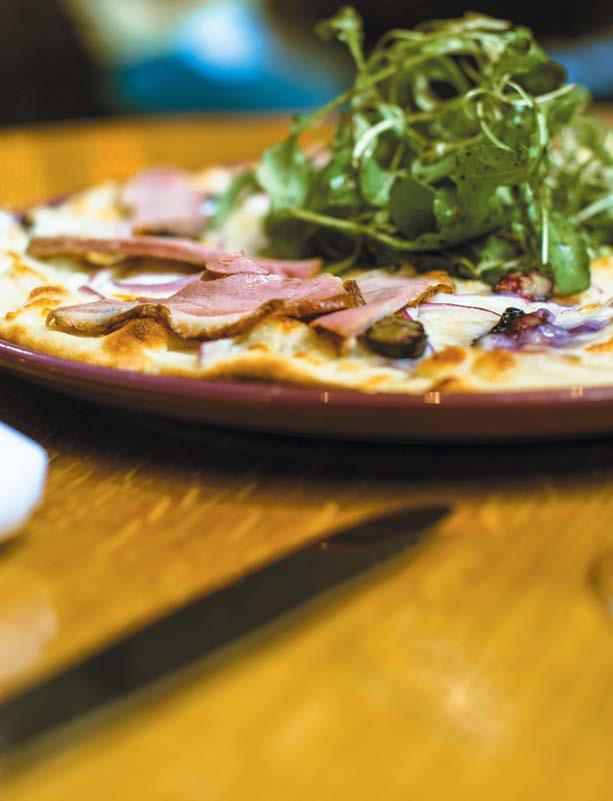
Chef Ryan Shelton of Bonny Doon Vineyard’s Le Cigare Volant restaurant loves berry season.
“When I was growing up, my mom used to go to Gizdich Ranch for berries and make me olallieberry pies on special occasions,” he says.
Shelton likes to mix fresh and frozen berries when he makes a pie or cobbler to give it a “more interesting texture and depth of flavor.” He also advises baking the fresh strawberries on top of a tart to bring out their “deeper apricot notes.”
But you will never find a mixed-fruit compote or mixed-berry pie on the restaurant menu. “You wait all year for the season, you source locally, then you bury the flavors,” he gripes. “I like to let the ingredients sing of what the taste is going to be.”
While he appreciates all berries, Shelton says blueberries are the “unsung heroes” of the culinary world. “They are so good, so nutritious and there are so many things you can do with them,” he says. Try making his Smoked Duck and Blueberry Flatbread from this recipe.
Smoked Duck Flatbread with Blueberry
Courtesy Ryan Shelton, executive chef at Le Cigare Volant Serves 4
2 6-ounce packages prepared pizza dough 1/2 pint blueberries, halved 12 thin slices smoked duck breast, or if duck is unavailable, thinly sliced ham 1 teaspoon balsamic vinegar 1 tablespoon extra-virgin olive oil 1/8 pound shredded mozzarella 1/4 pound arugula 1/4 red onion, sliced very thin
Roll out the dough very thinly, under 1/8-inch thick, into two rounds. Sprinkle dough first with shaved red onions, then cheese, and top with blueberries. Bake at 400° F on a pizza stone until browned and crispy. Remove from oven and slice. Mix olive oil with balsamic vinegar and dress arugula. Top flatbreads with arugula salad. Lay shaved duck over flatbreads and serve.
RECIPE: For Shelton’s recipe for Strawberry Parisian Tart, click on the “RECIPES” tab on our website, www.ediblemontereybay.com.
